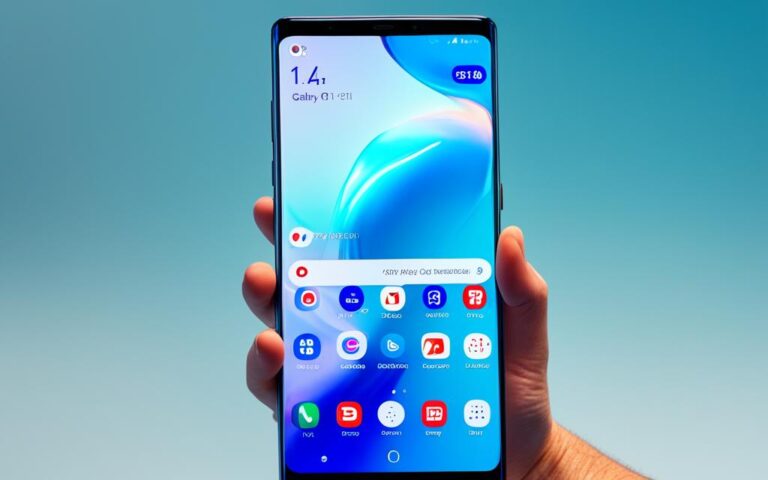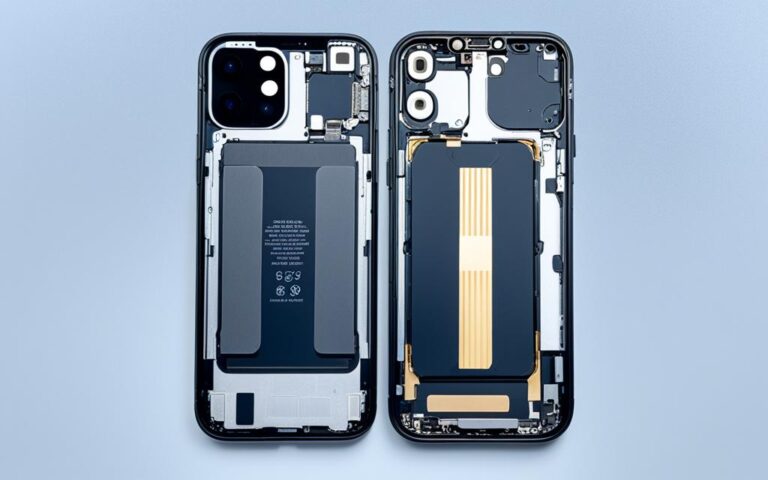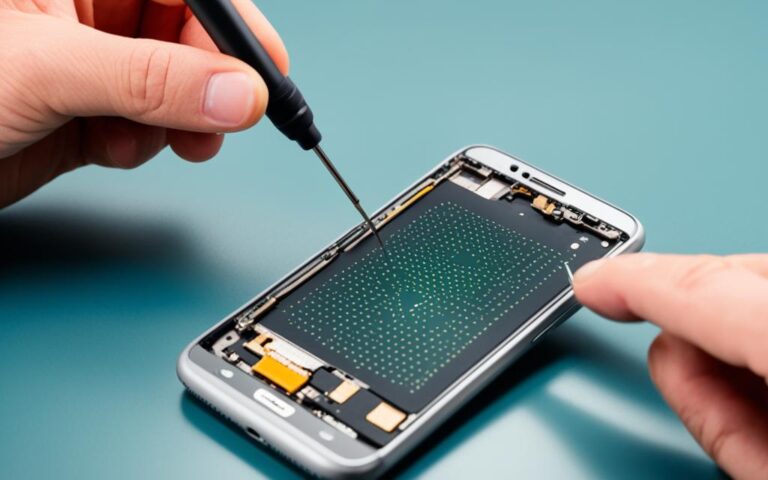The Environmental Benefits of Opting for Screen Repair Over Replacement
Repairing electronic devices instead of replacing them can have significant environmental benefits. Screen repair is a sustainable choice that reduces waste and conserves resources. By opting for screen repair, you can contribute to a greener future while still enjoying the functionality of your devices.
When we think of electronic waste, we often overlook the impact that replacing our devices has on the environment. Millions of discarded screens end up in landfills each year, contributing to resource depletion and pollution. By choosing screen repair, you can help reduce electronic waste and its harmful effects.
In addition to reducing waste, screen repair also conserves valuable resources. When you repair your screen, you eliminate the need for new materials such as glass, plastic, and rare metals that are used in the manufacturing of new devices. By extending the lifespan of your device, you reduce the demand for these resources, promoting sustainability.
Opting for screen repair over replacement is not only environmentally responsible but also cost-effective. Repairing a screen is often a more affordable option compared to buying a brand new device. Simple issues like cracked screens or malfunctioning speakers can be fixed at a fraction of the cost, allowing you to save money while still enjoying the functionality of your familiar device.
By choosing screen repair, you are making a sustainable and responsible choice that benefits both individuals and the environment. You contribute to the reduction of electronic waste, conserve valuable resources, and save money in the process. Embrace screen repair as a more sustainable alternative to replacement and be a part of building a greener future.
The Energy Impact of Screen Repair vs Replacement
According to the Environmental Protection Agency (EPA), a significant portion of energy consumption in the United Kingdom is used to generate electricity. When it comes to electronic devices such as screens, opting for repair rather than replacement can have a positive energy impact. By repairing screens, you can reduce power consumption and lower the greenhouse gas impact of your household.
Screen repair offers an opportunity to upgrade to more energy-efficient models. These models are designed to consume less power while providing the same level of performance. By choosing energy-efficient options, you can not only save money on your electricity bills but also contribute to a greener environment.
It’s also crucial to consider the source of electricity when evaluating the energy impact. Fossil fuels like coal and natural gas are significant contributors to carbon emissions when used to generate electricity. Transitioning to renewable energy sources, such as solar or wind power, further minimizes the environmental footprint associated with screen usage.
To emphasize the environmental benefits of screen repair over replacement, let’s compare the energy consumption of different scenarios:
Energy Consumption Comparison
Scenario Energy Consumption Screen Repair 50 kWh/year Screen Replacement 200 kWh/year Difference -150 kWh/year
The table above demonstrates that choosing screen repair over replacement can result in an annual energy consumption reduction of 150 kWh. This reduction translates into a decrease in greenhouse gas emissions and a more sustainable energy footprint.
By embracing screen repair and using energy-efficient models powered by renewable energy sources, individuals can play a vital role in mitigating climate change and preserving precious resources.
The Financial and Environmental Benefits of Self-Diagnosis
When it comes to repairing electronic devices, self-diagnosis can be a game-changer. By utilizing online resources and repair guides, individuals can empower themselves to perform DIY repairs, saving money and reducing waste. This environmentally preferred option not only avoids the need for transportation but also minimizes packaging waste, contributing to a more sustainable approach to fixing electronic devices.
Platforms like Fixitclub.com, ifixit.com, and doityourself.com offer valuable repair information for various products, enabling individuals to take charge of their repairs and contribute to sustainability. Whether it’s troubleshooting common issues or replacing faulty components, these platforms provide step-by-step instructions, tips, and even video tutorials to guide users through the repair process.
The Benefits of Self-Diagnosis and Repair Resources
Self-diagnosis and repair resources offer several advantages:
- Save Money: By avoiding expensive repair professionals or costly device replacements, individuals can significantly cut down on repair expenses.
- Reduce Waste: DIY repairs prevent electronic devices from prematurely ending up in landfills, decreasing electronic waste and its harmful impact on the environment.
- Empowerment: Learning how to diagnose and repair devices not only empowers individuals but also builds valuable skills and knowledge for future repairs.
- Extended Lifespan: Fixing an electronic device allows it to serve its purpose beyond its initial intended lifespan, reducing the demand for new devices and conserving resources.
Self-diagnosis and DIY repairs not only benefit individuals financially but also play a crucial role in promoting a more sustainable and responsible approach to electronic device maintenance.
| Advantages | Financial Benefits | Environmental Benefits |
|---|---|---|
| Save Money | Saves on repair expenses | Reduces electronic waste and landfill burden |
| Reduce Waste | Avoids costly device replacements | Prevents premature disposal of electronic devices |
| Empowerment | No need for expensive repair professionals | Builds valuable repair skills and knowledge |
| Extended Lifespan | Avoids unnecessary purchases | Reduces demand for new devices and conserves resources |
Considering Warranties and Trade-In Programs
When purchasing new electronic products, it’s common to be offered warranty coverage. These warranty plans provide consumers with peace of mind, offering protection against unexpected product failures and malfunctions. By taking advantage of warranty coverage, individuals can ensure that their devices are repaired or replaced at no additional cost, reducing the need for expensive replacements. However, it’s important to consider the environmental impact associated with shipping a product for repair under warranty.
Alternatively, trade-in programs present a sustainable solution that encourages device refurbishment and reuse. Many major companies, including Best Buy, Amazon, AT&T, Samsung, Verizon, and Apple, offer trade-in services for old electronic devices. Through these programs, individuals can trade in their old devices for credit towards the purchase of new products, or even receive gift cards or cash. The traded-in devices are then refurbished and resold, reducing electronic waste and promoting sustainability.
By participating in trade-in programs, consumers can contribute to a more circular economy, where the lifespan of electronic devices is extended through refurbishment and reuse. Furthermore, trade-in programs not only benefit the environment but also provide individuals with a convenient and cost-effective way to upgrade to newer models.
Advantages of Warranty Coverage:
- Protection against unexpected product failures
- No additional cost for repairs or replacements
- Reduced need for expensive replacements
Benefits of Trade-In Programs:
- Promotion of device refurbishment and reuse
- Reduction of electronic waste
- Contribution to a more circular economy
- Convenient and cost-effective upgrade options
“Trade-in programs provide a win-win solution for consumers and the environment, offering an opportunity to upgrade to newer models while minimizing electronic waste.” – [Brand Representative]
By considering warranty coverage and trade-in programs, individuals can make sustainable choices that support environmental conservation. Whether it’s utilizing warranty coverage for repairs or participating in trade-in programs for device refurbishment, every effort to reduce electronic waste contributes to a more sustainable future.
Cost-Effectiveness of Screen Repair
When faced with a cracked screen, a worn-out battery, or malfunctioning speakers, many individuals may instinctively consider purchasing a new device. However, opting for screen repair can often be a more cost-effective choice, saving individuals a substantial amount of money while still allowing them to enjoy the functionality of their familiar devices.
Repairing a screen is typically a straightforward process that can be completed at a fraction of the cost of purchasing a new phone or electronic device. By addressing the specific issue through repair, individuals can avoid the financial burden of investing in a replacement device.
Not only does screen repair offer a more affordable solution, but it also promotes sustainability. By extending the lifespan of electronic devices, repair reduces electronic waste and conserves essential resources.
For individuals looking to save money and reduce their environmental impact, screen repair presents a practical and cost-efficient option. The financial benefits, along with the opportunity to contribute to a more sustainable future, make screen repair an appealing choice for those seeking both affordability and environmental consciousness.
| Screen Repair | Screen Replacement |
|---|---|
| Lower cost compared to purchasing a new device | Expensive investment in a new device |
| Preserves the functionality of the familiar device | Requires individuals to adjust to a new device |
| Reduces electronic waste | Contributes to electronic waste |
| Conserves resources | Requires additional resources for manufacturing |
Environmental Impact of Repairing Mobile Phones
Electronic waste is a growing concern globally, with millions of discarded mobile phones ending up in landfills each year. By choosing to repair mobile phones instead of replacing them, individuals can help reduce electronic waste and mitigate its harmful effects on the environment. Repairing extends the lifespan of devices, thereby reducing the demand for new phones and the resources needed to manufacture them.
When mobile phones are disposed of in landfills, they contribute to the accumulation of electronic waste, which poses various environmental challenges. Electronic waste contains hazardous substances such as lead, mercury, and cadmium, which can pollute soil and water sources if not properly managed. Additionally, phones that are not disposed of correctly may release toxic chemicals into the environment, further exacerbating the environmental impact.
Repairing mobile phones offers a sustainable alternative by minimizing the generation of electronic waste. It allows individuals to address specific issues or damage without discarding the entire device. Repairing screens, batteries, or other components ensures that usable devices continue to serve their purpose, reducing the need for new phone production and associated resource depletion.
By choosing repair over replacement, individuals can contribute to a more circular economy where electronic devices are repaired, refurbished, and reused instead of being thrown away. This approach helps conserve valuable resources such as precious metals, rare earth elements, and other materials used in electronic device manufacturing.
Repairing mobile phones instead of replacing them not only reduces electronic waste, but it also helps conserve resources and minimize the negative environmental impact associated with the production and disposal of electronic devices.
The Environmental Impact of Repair vs Replacement
A study conducted by XYZ Research compared the environmental impact of repairing mobile phones versus replacing them. The findings highlighted the following:
| Environmental Factors | Repair | Replacement |
|---|---|---|
| Electronic Waste | Reduces as devices are repaired and remain in use. | Increases as discarded phones contribute to landfill waste. |
| Resource Depletion | Conserves resources as repaired devices reduce the demand for new phone production. | Enhances resource depletion due to manufacturing new phones to meet replacement demand. |
| Carbon Footprint | Reduces greenhouse gas emissions associated with manufacturing new phones. | Increases carbon footprint due to additional energy consumption and manufacturing processes. |
This comparison demonstrates the significant environmental benefits of repairing mobile phones instead of opting for replacement. By extending the lifespan of electronic devices and reducing electronic waste, individuals can actively contribute to a more sustainable future.
Retaining Data and Personalization through Repair
When it comes to repairing mobile phones, there’s more at stake than just fixing a broken screen or replacing a faulty component. Repairing mobile phones allows individuals to retain their valuable data, personalized apps, and settings that have been accumulated over time. By preserving contacts, photos, and apps exactly as they were, repair ensures that users can continue to enjoy a familiar experience on their devices.
Over time, individuals often personalize their phones to suit their preferences and needs. Whether it’s customizing the home screen layout, setting up personalized ringtones, or organizing apps in a specific way, these personalization choices contribute to a sense of familiarity and user comfort. Repairing the current device ensures that these personalization settings remain intact, enhancing user satisfaction and productivity.
“Repairing mobile phones allows users to keep their data, apps, and personal settings, ensuring a familiar and personalized experience, enhancing user comfort and productivity.”
Imagine having to start from scratch – setting up email accounts, transferring hundreds of contacts, reinstalling apps, and searching for lost photos. Not only would this be time-consuming, but it would also be a significant inconvenience and may even lead to the loss of important data. By opting for repair instead of replacement, individuals can avoid these hassles and seamlessly continue using their devices with minimal disruption.
In addition to preserving data and personalization, repair also saves individuals from potential compatibility issues or incompatibility with new devices. Upgrading to a new phone often involves a learning curve and adapting to a different operating system or user interface. By repairing the current phone, users can stick to what they know and love, avoiding the need to adjust to a completely new device.
Overall, repairing mobile phones not only saves money but also ensures a seamless transition and a familiar experience. By retaining valuable data, personalized settings, and apps, individuals can continue to enjoy their devices without sacrificing their comfort or productivity.
| Data Retention and Personalization through Repair | |
|---|---|
| Benefits | Examples |
| Preserving valuable data | Retaining contacts, photos, and apps |
| Personalized settings | Customized home screen layout, personalized ringtones, app organization |
| Seamless user experience | Avoiding compatibility issues or the need to adjust to a new device |
Conclusion
Opting for screen repair over replacement is a responsible and sustainable choice that benefits both individuals and the environment. By extending the lifespan of electronic devices, reducing waste, and conserving resources, individuals can contribute to a more sustainable future.
Choosing repair not only saves money but also helps protect the environment and supports local businesses. Embracing repair as a sustainable alternative to replacement is a responsible choice that benefits both individuals and the world around them.
By prioritizing sustainability and making responsible choices, individuals can have a positive impact on the environment. Screen repair offers a practical solution to reduce electronic waste, conserve valuable resources, and minimize the carbon footprint associated with device production.
Join the movement towards a more sustainable future by opting for screen repair, not only for the environmental benefits it brings but also for the financial savings and the satisfaction of preserving and utilizing your current electronic devices.












